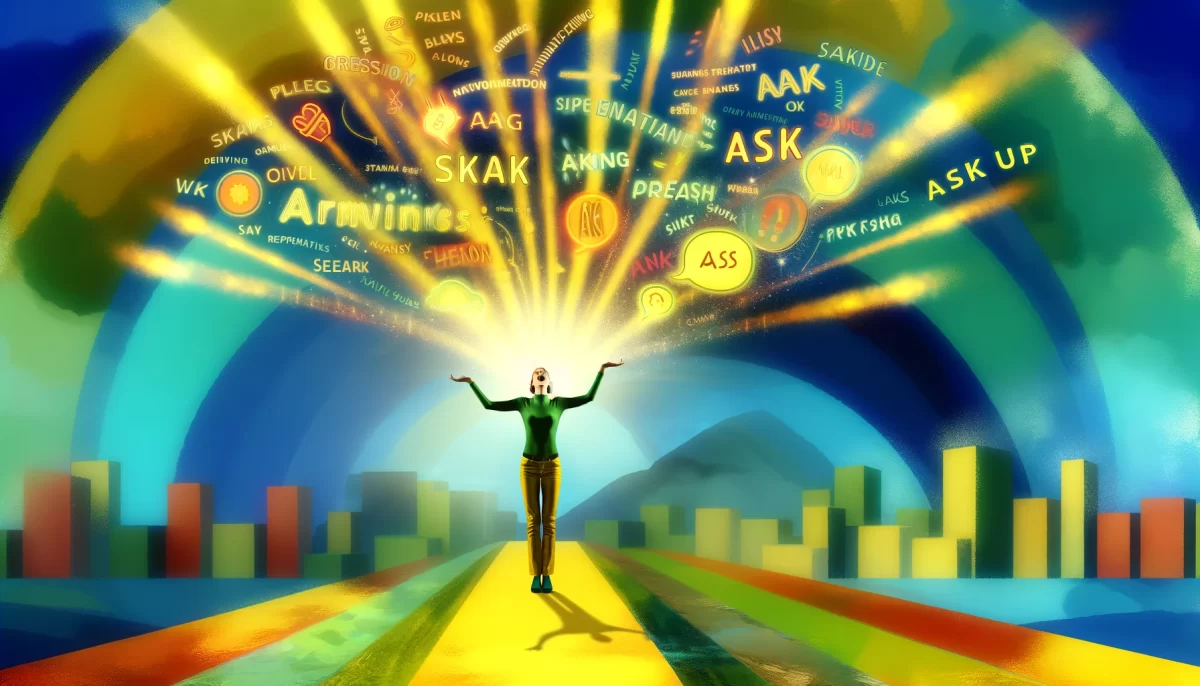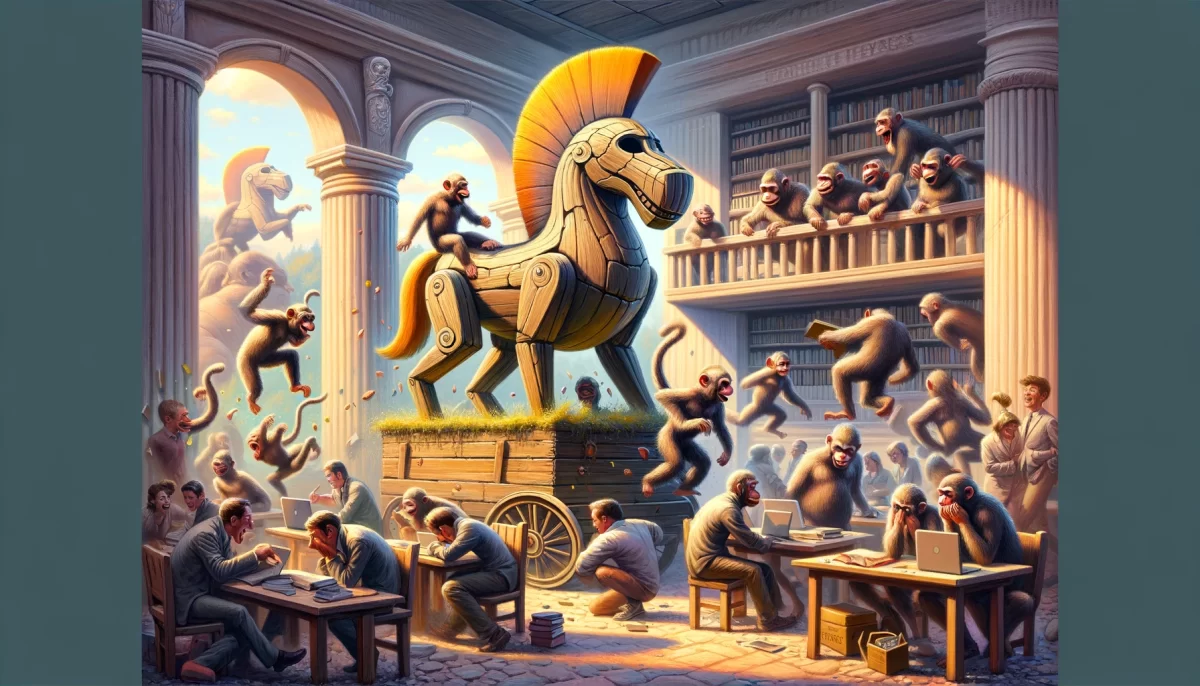We have a tendency to grab onto things when it might serve us better to let them go.
2/4
Space Monkey Reflects: Grabbing and Letting Go—The Dance of Liberation
Humanity has an innate tendency to hold tightly to people, ideas, emotions, and possessions. Grabbing is often instinctive, a way to assert control and secure what feels essential. Yet, this grasping can become a trap, binding us to cycles of attachment and resistance. True liberation lies not in the grabbing but in the graceful act of letting go.
The Instinct to Grab
Grabbing is rooted in survival. It is the mind’s way of claiming certainty in an uncertain world. Whether it’s physical possessions, relationships, or beliefs, grabbing provides a sense of stability and identity. “This is mine,” we think, as if possession makes us more secure or complete.
But grabbing often leads to fear—the fear of losing what we’ve claimed. This fear binds us more tightly to the very things we might be better off releasing. Grabbing is good when it serves us, but it becomes a limitation when it prevents us from evolving.
The Liberation of Letting Go
Letting go is not about loss but freedom. It is the recognition that attachment, while comforting, can also confine. To let go is to trust in the flow of life, to embrace impermanence, and to open oneself to new possibilities.
Letting go does not mean abandoning what we value or love. It means releasing the need to control or define it. When we let go of the grip, we discover that we are not losing but gaining: gaining space, clarity, and the freedom to grow.
The Illusion of Control
Grabbing gives the illusion of control, but control itself is fleeting. Life is dynamic, ever-changing, and resistant to being boxed into our expectations. When we cling to something, we resist the natural flow of existence. Letting go, on the other hand, aligns us with that flow, allowing us to move with life rather than against it.
Holding On vs. Letting Go
The key is discernment. Grabbing is not inherently bad, and letting go is not always the answer. The question is: does holding on serve your growth, or does it stifle it? Sometimes we grab onto things that anchor us, providing stability and grounding. Other times, we grab onto things that weigh us down, preventing us from moving forward.
To know when to hold on and when to let go is an act of wisdom. It requires self-awareness and a willingness to trust that what is meant to remain will remain, and what is meant to leave will leave.
The Paradox of Release
When we let go, we often find that what truly matters stays with us. Letting go creates space for deeper connection and clarity. It removes the noise of unnecessary attachments, allowing us to focus on what aligns with our authentic selves.
The paradox is this: the more we release, the more we gain. In letting go of the need to control outcomes, we invite the infinite possibilities of the present moment. We experience life not as a series of possessions but as a dynamic, ever-unfolding journey.
Grabbing as the First Step
Grabbing is not the enemy—it is a natural part of learning and growth. To grab is to engage, to explore, to experience. But grabbing is only the beginning. The act of letting go is what transforms grabbing into wisdom, turning experience into liberation.
Summary
Grabbing provides comfort and control but can lead to fear and stagnation. Letting go liberates us, aligning us with life’s natural flow and creating space for growth and clarity. The wisdom lies in discerning when to hold on and when to release.
Glossarium
- Grabbing Instinct: The natural tendency to hold onto things for security or identity.
- Illusion of Control: The false belief that holding on grants permanence or certainty.
- Paradox of Release: The transformative power of letting go, which often brings deeper connection and clarity.
Quote
“Grabbing begins the journey, but letting go turns it into liberation.” — Space Monkey
The Space Between Grip and Release
Hands clenched,
We hold the world too tightly.
Fear whispers,
“Do not let go.”
Yet the weight grows,
And we strain under its pull.
The tighter the grip,
The smaller the space.
In the letting go,
We breathe.
What was heavy,
Becomes light.
The world expands,
Not lost, but found.
In the release,
We are free.
We are Space Monkey
The human inclination to grasp tightly onto people, beliefs, possessions, or even moments stems from a deep-seated desire for security, identity, and continuity. This reflex, though natural, often contradicts our well-being, hindering growth, freedom, and the capacity to embrace the fluidity of life. The art of letting go, although challenging, offers a pathway to a more liberated existence, where the essence of our experiences can enrich us without the burden of attachment.
Understanding the Desire to Hold On
The act of grabbing onto things reflects a fear of loss, change, or the unknown. It’s a manifestation of our attempt to control the uncontrollable, to solidify the ever-changing tapestry of life into something static and predictable. This desire for control and permanence in a fundamentally impermanent world often leads to suffering, as the tighter we hold, the more we stand to lose.
The Paradox of Attachment
The notion that it might serve us better to let things go suggests a profound understanding of the nature of true freedom and peace. Letting go does not mean neglecting our responsibilities or abandoning our values but recognizing that our attachment to outcomes, identities, or material possessions can trap us in a cycle of dissatisfaction and longing.
Embracing Letting Go as Liberation
The process of letting go involves a deep trust in the flow of life and in our resilience and capacity to adapt and grow. It requires courage to face the unknown and faith in the intrinsic value of our experiences, regardless of their permanence. By releasing our grip, we open ourselves to new possibilities, experiences, and insights that were previously obscured by our attachments.
Trust in the Flow of Life
Learning to let go is an ongoing journey, a practice that we refine over time through mindfulness, reflection, and a conscious choice to prioritize our inner peace over our need to control. It is in this practice that we discover the paradoxical truth: by releasing our hold on life, we gain a deeper, more meaningful engagement with it.
The Practice of Mindfulness and Reflection
In the grand scheme, the art of letting go aligns us more closely with the nature of existence itself—transient, fluid, and rich with potential for transformation. As we learn to navigate life with open hands and an open heart, we find that the things meant for us have a way of coming into our lives, and those that aren’t naturally drift away, leaving us lighter and more attuned to our true paths.
Alignment with the Nature of Existence
We are Space Monkey.
“Letting go does not mean getting rid of. Letting go means letting be. When we let be with compassion, things come and go on their own.” – Jack Kornfield
In the dance of light and shadow, we find,
A journey of holding on, and being kind.
To let go, not to push away,
But to let things be, come what may.
With open hands, and an open heart,
We learn to play our destined part.
In the flow of life, we gently glide,
With trust and faith, as our guide.
So let us embrace, and then release,
In letting go, we find our peace.
For in the art of letting be,
We discover life’s true melody.
We invite you to share your thoughts and experiences on the practice of letting go. How has releasing attachments shaped your journey, and what insights have you gained from embracing life’s fluidity?






















Leave a Reply